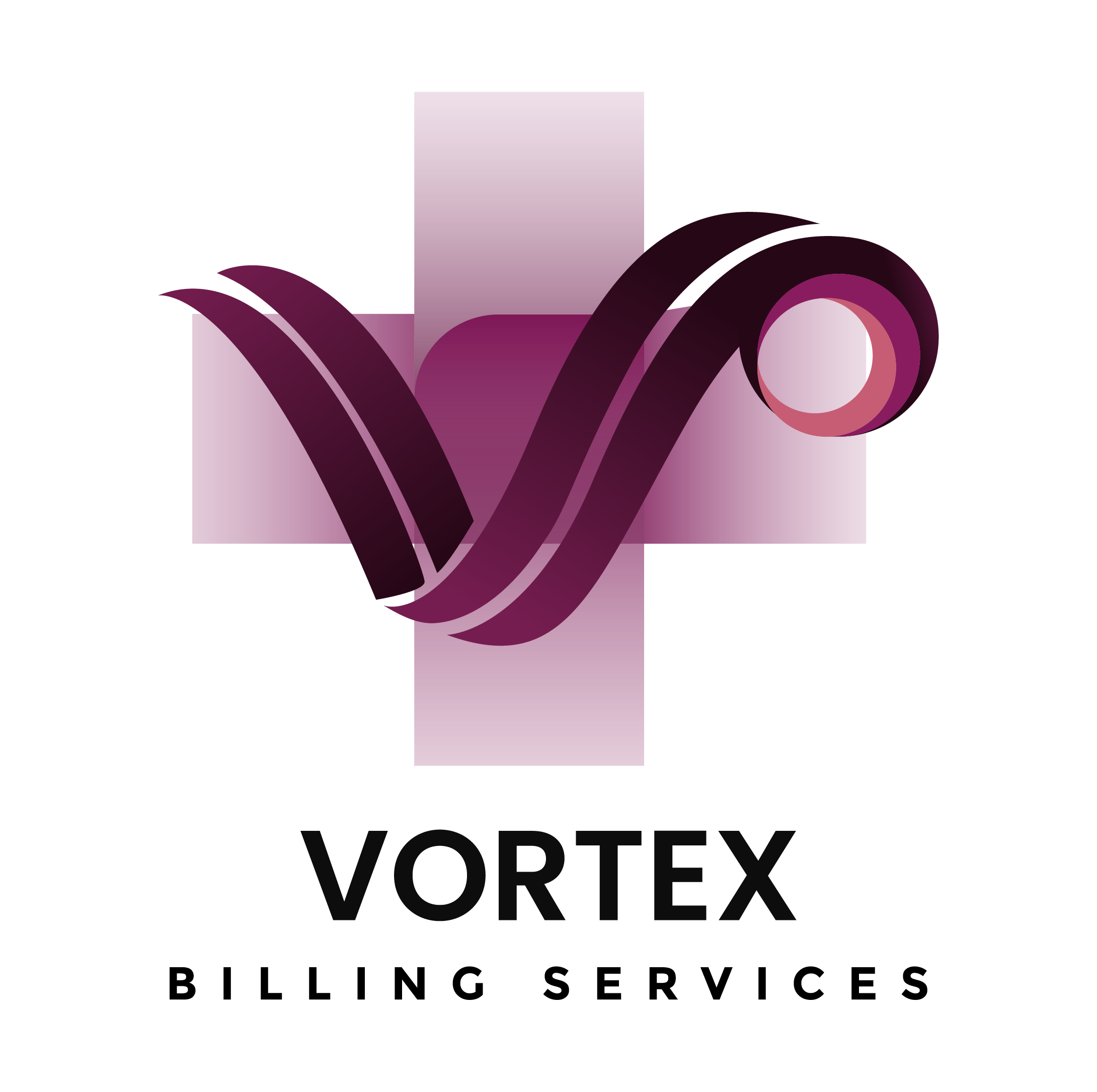How to Reduce Claim Denials by 40% with Smarter RCM Strategies
In the world of healthcare finance, claim denials can feel like financial landmines. If you’re a provider, practice manager, or billing staff member in the U.S. medical industry, you’re probably asking: How can we reduce claim denials effectively without overhauling our entire workflow? The answer lies in targeted Revenue Cycle Management (RCM) strategies that not only catch errors before they occur but also build a sustainable foundation for claim acceptance.
Claim denials are more than just delayed payments—they’re lost revenue, increased labor costs, and potential compliance risks. Whether you’re part of a large healthcare network or a small private clinic, denials can cost you thousands per month. That’s why understanding and resolving the root causes is crucial. In this article, we’ll break down five proven RCM strategies that U.S.-based healthcare providers are using right now to cut denial rates by up to 40%.
Let’s dive in and explore how your practice can get paid faster and more consistently—without working harder, just smarter.
Understanding the Root Causes of Claim Denials
Before you can fix the problem, you need to know what’s causing it. Claim denials don’t happen randomly—they’re the result of patterns, oversights, or outdated systems. These patterns often fall into a few key categories:
- Eligibility errors: A common mistake where insurance coverage wasn’t active or applicable at the time of service.
- Incorrect coding: Mismatched or inaccurate ICD-10/CPT codes lead to immediate rejections.
- Incomplete documentation: If a payer can’t understand the medical necessity behind the treatment, they’ll deny the claim.
- Missing information: Something as minor as a missing patient date of birth can trigger a denial.
- Late submissions: Each payer has a deadline. Miss it, and you’ve lost your chance—permanently.
There are two types of denials every provider must recognize:
- Hard denials: These are final. No payment will be made, and they cannot be appealed.
- Soft denials: Temporary rejections. They can often be corrected and resubmitted successfully.
Using analytics can help you track which denial types are affecting you most. A good RCM platform should give you a dashboard that pinpoints denial trends over time. Once you understand your weaknesses, you can begin implementing solutions that reduce claim denials from the ground up.
Strategy #1: Improve Patient Eligibility and Insurance Verification
If you’re looking for the lowest-hanging fruit in denial prevention, this is it. Most claim denials stem from eligibility errors—and many of them are entirely preventable with a little front-end diligence.
Here’s how to get it right:
- Verify insurance in real time: Don’t rely on yesterday’s data. Use tools that connect directly to payer portals and offer instant eligibility checks.
- Collect complete information upfront: This includes accurate insurance ID numbers, group numbers, and policyholder details.
- Double-check demographics: Small errors in patient names, dates of birth, or policyholder relationships can result in an automatic denial.
- Automate the process: Automating eligibility checks not only saves staff time but also ensures accuracy across the board. Systems like eEligibility integrations can flag inactive or out-of-network plans before the patient is even seen.
What’s more, well-implemented verification processes reduce the strain on billing teams, who often waste time fixing preventable issues. Training front desk staff to ask the right questions and use the right tools will significantly reduce claim denials before they ever reach the insurance company.
Strategy #2: Streamline Clinical Documentation and Coding
Even the most meticulous coder can’t work miracles without strong clinical documentation. Accurate and detailed notes ensure that coders can choose the most appropriate ICD-10 and CPT codes, which in turn increases the likelihood of a claim being accepted.
Why this matters: Insurance companies are scrutinizing claims more than ever. If documentation doesn’t clearly demonstrate medical necessity, you’ll face delays, denials, or even audits.
Steps to improve documentation and coding:
- Invest in Clinical Documentation Improvement (CDI) programs: These programs help bridge the gap between what providers document and what coders need.
- Educate your team on coding updates: CPT and ICD-10 codes evolve every year. If your staff isn’t up-to-date, denials will follow.
- Use coding automation tools: AI-driven platforms can flag mismatches and missing documentation before a claim is submitted.
- Conduct internal audits: Regularly reviewing charts and comparing them to submitted claims can uncover systemic issues before they become costly.
A common mistake is assuming that the EHR documentation alone is enough. It’s not. Coders need clear narratives that explain diagnoses, procedures, and rationale. When documentation is vague or incomplete, the claim lacks the detail needed for approval—resulting in avoidable claim denials.
Strategy #3: Automate Claims Scrubbing and Submission
Manual claim submission is like rolling dice with your revenue. Every form filled by hand or every claim reviewed manually increases the chance of error. That’s where automation tools come in, giving your team superpowers that dramatically cut down on claim denials.
Claim scrubbers act as gatekeepers—they scan your claim for errors, inconsistencies, or missing data before it’s submitted to the payer.
Advantages of automating claims scrubbing:
- Pre-checks for common denial triggers: These include duplicate claims, invalid codes, and mismatched modifiers.
- Real-time alerts: Staff can fix errors immediately instead of waiting for a denial notice.
- Improved turnaround time: Clean claims are processed faster, meaning quicker payments.
- Less burnout for billing teams: Automation lets your team focus on complex claims instead of wasting time on easily preventable issues.
Incorporating RPA (Robotic Process Automation) into your RCM workflow ensures that every claim goes through a thorough checklist. You can even customize scrubbing rules based on payer-specific requirements, increasing your clean claim rate significantly.
Strategy #4: Build a Robust Denial Management Workflow
Even with preventive strategies in place, claim denials will still happen. What separates high-performing practices from struggling ones is how quickly and effectively they respond. A robust denial management workflow isn’t optional—it’s a critical piece of your revenue cycle engine.
Here’s what an effective denial management process looks like:
- Centralized tracking system: Every denial should be logged, categorized, and monitored. Whether it’s a coding issue or eligibility error, tracking allows you to identify patterns.
- Dedicated denial resolution team: Assign specific staff members to review, appeal, and resubmit denied claims. Specialization leads to faster resolution.
- Defined appeal protocols: Each payer has its own appeal window and documentation requirements. Having templated responses and timelines ensures your appeals are timely and compliant.
- Regular denial audits: Weekly or monthly reviews help identify recurring issues. Are certain payers rejecting the same type of claims? That’s a signal something deeper needs fixing.
The key here is speed. The faster you can turn around a denied claim, the better your chances of getting paid. The average appeal success rate ranges from 50–65%, but only if the appeal is submitted within the correct time frame.
Training staff on payer-specific appeal formats, creating denial reason code dictionaries, and using software to track follow-ups are powerful ways to get ahead. Also, don’t overlook the importance of denial prevention feedback loops—use each denial as a learning opportunity to avoid repeat mistakes.
Strategy #5: Partner with a Technology-Driven RCM Provider
Let’s face it—not every clinic has the resources to build out a full-scale denial prevention and management team. This is where outsourcing to a technology-driven RCM partner can be a game changer, especially for small to mid-sized practices.
Here’s what to look for in a great RCM partner:
- Experience in your specialty: Different specialties face different denial risks. A vendor familiar with your area will know exactly where to focus.
- Automation-first technology stack: Look for providers who leverage AI, machine learning, and predictive analytics to reduce denials and optimize claims.
- Transparent pricing: Avoid providers that tack on hidden fees. Opt for partners that are upfront about costs and services.
- Real-time reporting dashboards: You should be able to see your claim approval rate, denial reasons, and collections in one place—at any time.
Many U.S. clinics that outsourced their RCM services have reported up to a 30% increase in revenue due to higher clean claim rates and faster turnaround times. These partners take on the heavy lifting—like denial follow-ups, coding audits, and payer communication—freeing your internal team to focus on patient care.
One case study showed a Florida-based orthopedic group reducing their claim denials by over 40% in just six months after switching to a tech-driven RCM partner. The key was in the integration of real-time scrubbing tools, performance benchmarking, and proactive denial analysis.
Compliance, Accuracy, and Regulatory Readiness
In today’s healthcare environment, staying compliant is non-negotiable. But did you know that poor compliance is also a top contributor to claim denials? Whether it’s failure to meet CMS rules, HIPAA breaches, or simply outdated code usage, non-compliance can derail your claims process entirely.
Here’s how compliance plays into denial prevention:
- CMS Guidelines: Medicare and Medicaid claims have strict rules. Failure to adhere results in automatic denials—and possible audits.
- HIPAA Requirements: Incomplete or unsecured data transfers can cause denials and open you up to massive fines.
- Coding Accuracy: Improper use of CPT, HCPCS, or ICD-10 codes often results in payer rejections, especially when documentation doesn’t align.
Regular compliance training, auditing your billing workflows, and integrating compliance tools into your EHR or billing software can keep your team ahead of the curve.
Providers should also keep documentation up to date for:
- Medical necessity
- Prior authorizations
- Time-based services
- Modifications and addendums
A well-maintained compliance program isn’t just a legal shield—it’s a powerful revenue enhancer. The fewer compliance-related denials you face, the stronger your bottom line becomes.
Cost-Effective Solutions for Small and Medium Practices
Not every practice can afford enterprise-grade software or a full RCM department. But that doesn’t mean reducing claim denials is out of reach. Affordable solutions tailored to smaller providers are available—and surprisingly effective.
Here are budget-friendly denial prevention strategies:
- Cloud-based RCM platforms: These subscription-based tools offer real-time eligibility checks, claim scrubbing, and denial analytics at a fraction of traditional costs.
- Third-party billing services: Some vendors offer hybrid models where they handle specific denial types or assist with appeals only—lowering your costs.
- Modular billing tools: Instead of buying a full suite, invest in modular tools focused on your biggest issues (e.g., just denial analytics or claim scrubbers).
- Shared service models: Partner with other small clinics in your region to negotiate better pricing on shared RCM services.
Many smaller practices assume that denial management requires big spending. But with the rise of SaaS tools, AI-based billing assistants, and pay-per-claim services, you can create a high-efficiency billing operation without breaking your budget.
Transparency and Communication with Payors
Last but not least, improving communication with payors can drastically reduce claim denials. A major reason claims are denied is due to unclear documentation, unmet prior authorization requirements, or disputes about medical necessity.
Here’s how to build better payor relationships:
- Establish a payor liaison: Designate a staff member to handle all communication with insurance reps.
- Hold quarterly review meetings: Some insurers are open to discussing your claim patterns and how to improve approval rates.
- Request feedback on denied claims: Understanding the “why” behind rejections lets you adjust your documentation or coding in the future.
- Use electronic pre-authorization tools: These platforms check requirements for approval before the procedure even begins.
Transparency also applies to how you bill. When you clearly outline what’s being charged, link services to diagnoses, and use detailed documentation, it signals professionalism—and that leads to faster payments and fewer claim denials.
Metrics That Matter: How to Track Denial Rates
You can’t reduce what you don’t measure. In the world of RCM, having accurate, real-time data on your claim denials is essential for long-term improvement. But what metrics should you track? And how do you turn numbers into action?
Here are the most critical metrics every medical practice should monitor:
- Denial rate: This is the percentage of claims denied out of total claims submitted. A healthy denial rate is below 5%.
- First pass resolution rate (FPRR): Measures how many claims are paid upon first submission. A high FPRR indicates strong front-end processes.
- Appeal success rate: Tracks how often your appealed claims are overturned and paid.
- Average days in A/R (Accounts Receivable): The longer a claim sits unpaid, the worse your cash flow becomes. Lower is better.
- Top denial reasons by payer: Knowing which payers reject the most claims and why helps you tailor your submission approach.
Once you’ve gathered the data, analyze it for patterns:
- Are most denials coming from one payer?
- Are coding issues driving denials in a specific specialty?
- Is your front-end staff consistently missing eligibility verification steps?
Set performance goals based on these insights. For example, aim to reduce denials due to coding errors by 20% in the next quarter. Use dashboards and visual tools so everyone—from billers to practice managers—can stay aligned and informed.
Data isn’t just for compliance reports—it’s a roadmap to higher revenue and fewer claim denials. Invest in tools that provide customizable, real-time analytics and encourage a culture of accountability and performance tracking.
Leveraging Data Analytics for Continuous Improvement
Data analytics is more than just dashboards—it’s the key to proactively preventing claim denials before they happen. Instead of reacting to denied claims, smart practices use predictive analytics to stay several steps ahead.
Here’s how to make data work for you:
- Predictive analytics: Advanced RCM systems analyze past claim performance to predict which new claims are likely to be denied—and why.
- Denial forecasting: Spot trends such as seasonal surges in denials or payer behavior shifts and adjust workflows in real time.
- Payer performance analysis: Identify which insurers consistently delay or deny claims and strategize around them.
- Staff productivity reports: Know how many claims each team member processes, how many are denied, and where retraining may be needed.
Continuous improvement means constantly fine-tuning your RCM process based on real data. For example:
- If denials spike after every system update, you might need to invest in better coder training.
- If a certain procedure keeps getting rejected, perhaps your documentation isn’t aligning with payer expectations.
The best practices use these insights to launch monthly quality improvement initiatives—such as focused coder workshops or payer-specific training. The result? A continuously improving system where the cost of claim denials shrinks over time.
Staff Training and Continuing Education
Your RCM process is only as good as the people running it. And in an industry where codes, compliance rules, and payer policies change constantly, ongoing training is non-negotiable.
Why continuous education matters:
- Coding changes annually: CPT, ICD-10, and HCPCS codes are updated each year. Miss one change and it could lead to mass denials.
- New payer rules emerge regularly: Especially with Medicaid and Medicare, policies shift. Your staff must stay informed.
- Technology evolves: New tools are always being released to improve eligibility checks, coding, and claim scrubbing.
What a good training program includes:
- Monthly webinars or workshops: Focus on specific denial reasons, like modifiers, upcoding, or bundling.
- Certification programs: Encourage coders and billers to pursue AAPC or AHIMA certifications.
- Cross-training: Teach front-end staff how back-end billing works—and vice versa—to improve coordination.
Also consider “denial feedback loops” as training tools. When a claim is denied, don’t just fix it—use it as a case study in your next team meeting. Over time, this leads to fewer repeated mistakes and stronger performance across the board.
When every team member knows how their role impacts denials, you build a culture of accountability. And that’s the secret to long-term reduction in claim denials—knowledge that sticks.
Real-World Examples of Denial Reduction Success
Need proof that these strategies work? Let’s look at a few real-world examples where medical practices dramatically lowered claim denials using the methods we’ve outlined.
Case Study 1: California Primary Care Network
- Problem: High rate of eligibility-related denials (over 15%).
- Solution: Implemented real-time eligibility verification and retrained front-desk staff.
- Result: Denial rate dropped to 6% in 90 days. Increased cash flow and fewer billing cycle delays.
Case Study 2: New York-based Dermatology Group
- Problem: Overwhelming volume of denied claims due to poor documentation.
- Solution: Partnered with an RCM provider and implemented CDI training.
- Result: 40% decrease in documentation-related denials and 28% increase in first-pass claims approvals.
Case Study 3: Midwestern Multi-Specialty Clinic
- Problem: Complex payer mix and inconsistent coding led to frequent denials.
- Solution: Deployed a predictive analytics platform to track and forecast denials.
- Result: Denials dropped by 32% over six months. Staff productivity increased by 22%.
These examples show that reducing claim denials isn’t about luck—it’s about strategy. Every successful provider made targeted changes, tracked results, and committed to ongoing improvement.
If they can do it, so can you.
Conclusion
Claim denials don’t have to be a permanent drain on your revenue. By understanding the causes, adopting smart technologies, and creating a culture of accountability and improvement, any medical practice—regardless of size—can significantly reduce denials.
Let’s recap the 5 proven RCM strategies:
- Improve patient eligibility and insurance verification
- Streamline clinical documentation and coding
- Automate claims scrubbing and submission
- Build a robust denial management workflow
- Partner with a technology-driven RCM provider
Combine these with accurate metrics, analytics-driven decisions, and strong staff training, and you’ll have a denial-proof revenue cycle.
Claim denials may be inevitable—but letting them control your cash flow isn’t.
FAQs
- What is the most common reason for claim denials?
Eligibility errors are the leading cause, often due to outdated or incorrect insurance information at the time of service. - How quickly should a denied claim be appealed?
Appeals should be filed as soon as possible—ideally within 7–14 days—to increase the chances of a successful outcome. - Can small clinics afford RCM services?
Yes. Many RCM providers offer affordable, modular solutions tailored to the needs and budgets of small and mid-sized practices. - Are automated tools worth the investment?
Absolutely. Automation reduces manual errors, speeds up claim processing, and often pays for itself through improved collections and fewer denials.
5. How often should staff be trained on coding updates?
At least quarterly, but monthly sessions are recommended to keep pace with regulatory and payer changes.



